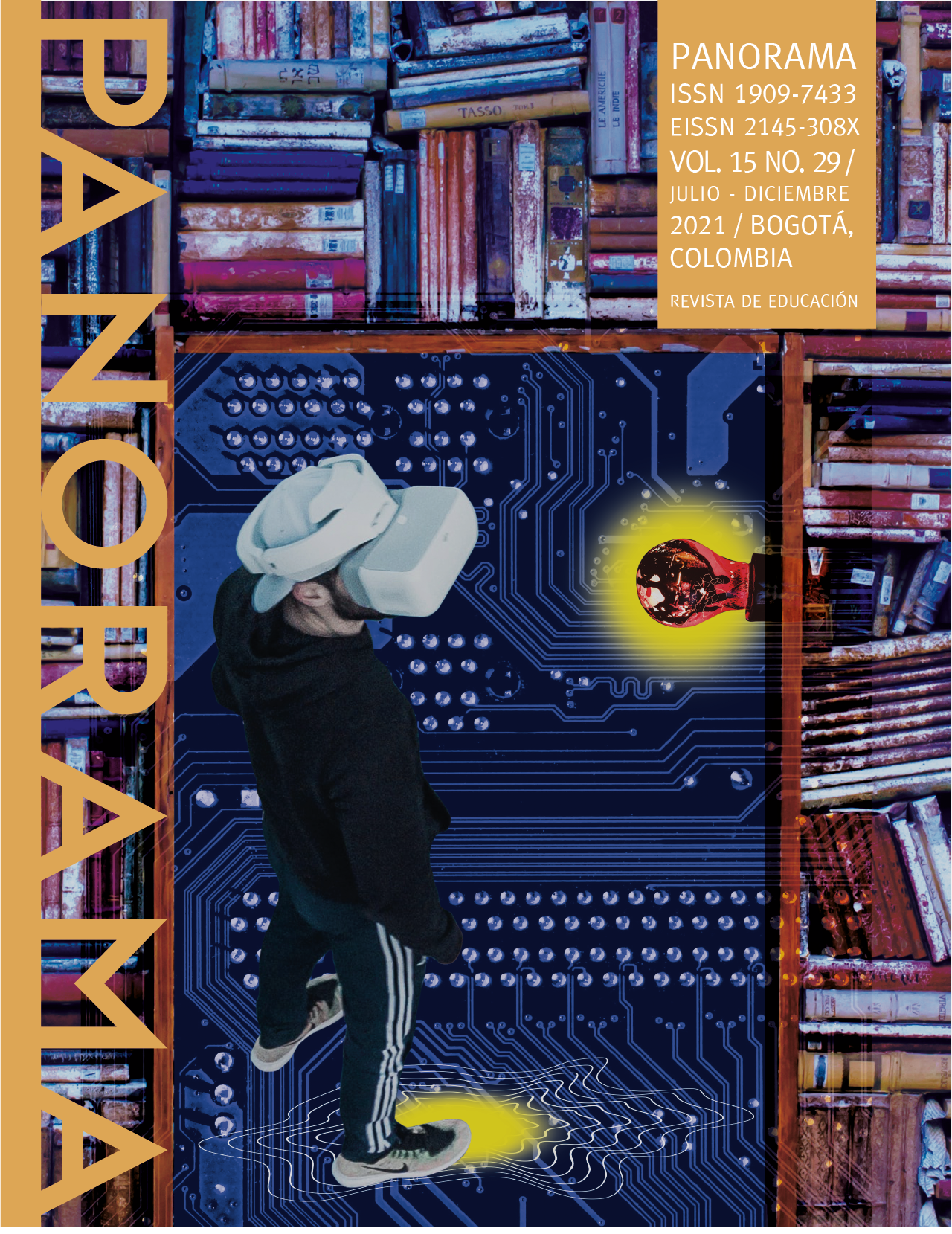Abstract
This article introduces the results of an experimental intercultural English class (IEC) using the flipped classroom methodology. Thematic units were developed with the 5 E's instructional model (Engage, Explore, Explain, Elaborate, and Evaluate) based on the constructivist approach to learning. This qualitative study collected data from 20 students at Atlántico University. The questionnaires used in the analysis of the 2 survey rounds rate Students’ responses in relation to learning of contents, methodology of the class and autonomy. Results based on the second round led to four major conclusions: (i). There is satisfaction with the use of the Flipped Classroom strategy, in terms of time management and freedom to prepare classes. (ii). Practical activities are more engaging to work collaboratively. (iii) Teachers have a subtle presence which provides more opportunities for students to negotiate control and participation. (iv) Although autonomous learning is possible, teacher support is pivotal to increasing it. These findings are discussed within the framework of the didactical component of teaching and its implications for this public university.
References
Buil-Fabregá, M.; Martínez Casanovas, M.; Ruiz-Munzón, N.; Filho, W.L. (2019). Flipped Classroom as an Active Learning Methodology in Sustainable Development Curricula. Sustainability, 11, 4577. https://doi.org/10.3390/su11174577
Butt, A. (2014). Student views on the use of a flipped classroom approach: evidence from Australia. Business Education & Accreditation, 6(1), 33-44.
Byram, M. & G. Zarate. (1994). Definitions, objectives and assessment of socio-cultural competence. Strasbourg: Council of Europe.
Byram, M. (1995). Acquiring Intercultural Competence. A Review of Learning Theories. In T. Vestergard, (Ed.), Language, Culture and Identity (pp. 53-69). Aalborg University, Denmark.
Byram, M. (1997). Teaching and assessing Intercultural Communicative Competence. Clevedon, UK: Multilingual Matters.
Check, J., & Schutt, R. K. (2012). Survey research. In: J. Check, R. K. Schutt., editors. Research methods in education. (pp. 159-185). Thousand Oaks, CA: Sage Publications.
Chiu, C., Gelfand, M., Yamagishi, T., Shteynberg, G., & Wan, C. (2010). Intersubjective Culture: The Role of Intersubjective Perceptions in Cross-Cultural Research. Perspectives on Psychological Science, 5(4), 482-493. Retrieved April 17, 2020, from www.jstor.org/stable/41613455
Demetry. C. (2010). Work in progress: An innovation merging "classroom flip" and team-based learning. In Proceedings, 40th ASEE/IEEE Frontiers in Education Conference.
Estes, M. D., Ingram, R., & Liu, J. C. (2014). A review of flipped classroom research, practice, and technologies. International HETL Review, (4),7. Retrieved from https://www.hetl.org/feature-articles/a-review-of-flipped-classroom-research-practic e-and-technologies.
Foertsch, J. Moses, G. Strikwerda, J. and Litzkow. M. (2002). Reversing the lecture/homework paradigm using E teach R web-based streaming video software. Journal of Engineering Education-Washington, 91(3):267–274.
Hao, Y. (2016). Exploring undergraduates’ perspectives and flipped learning readiness in their flipped classrooms. Computers in Human Behavior, 59, 82–92. https://doi.org/10.1016/j.chb.2016.01.032.
Holliday, A. and MacDonald, M. (2019) Researching the intercultural: intersubjectivity and the problem with postpositivism. Applied Linguistics. pp. 1-20. ISSN 0142-6001.
Lage, M., Platt, G., & Treglia, M. (2000). Inverting the Classroom: A Gateway to Creating an Inclusive Learning Environment. The Journal of Economic Education, 31(1), 30-43. doi:10.2307/1183338
M.J. Platt, G.J. and Treglia M. (2000). Inverting the classroom: A gateway to creating an inclusive learning environment. The Journal of Economic Education, 31(1):30–43, 2000.
Manichander, T. (2016). Teacher and Teaching Process. Ashok Yakkaldevi.
Méndez, P. and Guerrero, C. H. (2018). “English Teachers’ profiles and technology-related professional development”. In Castañeda-Peña, H.; Guerrero, C.H.; Méndez, P.; Castañeda, J.; Díaz, J.; López, M.; Ramírez, M.; Rincón, L.; & Rodríguez, C. (2018). Technology in ELT: Achievements and Challenges for ELT development. UD Editorial. Bogotá.
O’Flaherty, J., & Phillips, C. (2015). The use of flipped classrooms in higher education: A scoping review. Internet and Higher Education, 25, 85–95. https://doi.org/10.1016/j.iheduc.2015.02.002.
Purdue University (2020). Improve your intercultural competence. Retrieved from https://www.futurelearn.com/courses/intercultural-competence
Reinhardt, J. (2018). “Social Media in the L2 Classroom: Everyday agency, awareness and autonomy”. In Castañeda-Peña, H.; Guerrero, C.H.; Méndez, P.; Castañeda, J.; Díaz, J.; López, M.; Ramírez, M.; Rincón, L.; & Rodríguez, C. (2018). Technology in ELT: Achievements and Challenges for ELT development. UD Editorial. Bogotá.
Siemens, G., Gašević, D., & Dawson, S. (2015). Preparing for the Digital University: a review of the history and current state of distance, blended, and online learning. Pg. 62. Athabasca University. Retrieved from http://linkresearchlab.org/PreparingDigitalUniversity.pdf
Soto-Molina, J. E. (2018). La interculturalidad en la adquisición del inglés: desde la diversidad hacia la equidad; (Interculturality in the acquisition of English: from diversity towards equity). FAIA, 7(31), 8.
Soto-Molina, J. E., & Méndez, P. (2020). Linguistic Colonialism in the English Language Textbooks of Multinational Publishing Houses. HOW Journal, 27(1), 11-28.
Strayer, J.F. (2012). How learning in an inverted classroom influences cooperation, innovation, and task orientation. Learning Environments Research, 15(2), 171-193.
Tomas, L., Lasen, M., Field, E., Skamp, K. (2015). Promoting online students’ engagement and learning in science and sustainability preservice teacher education. Australian Journal of Teacher Education, 40(11), 78–107. https://doi.org/10.14221/ajte.2015v40n11.5.
Tomas, L., Evans, N., Doyle, T., and Skamp, K., (2019). Are first year students ready for a flipped classroom? A case for a flipped learning continuum. Int J Educ Technol High Educ 16, 5 https://doi.org/10.1186/s41239-019-0135-4
Van Dijk, T. A. (2012). Discurso y contexto: un enfoque sociocognitivo. Barcelona: Gedisa.
Viveka S, Sagar T V, Sudha M J. (2017). Effectiveness of flipped classroom for teaching anatomy and students’ perceptions. Natl J Clin Anat, 1(6), p.71-81. http://www.njca.info/text.asp?2017/6/1/71/297658
Warter-Perez, N. and Dong J. (2012). Flipping the classroom: How to embed inquiry and design projects into a digital engineering lecture. In Proceedings of the 2012 ASEE PSW Section Conference.
Zappe, S., Leicht, R., Messner, J., Litzinger, T., & Lee, H. W. (2009). "flipping" the classroom to explore active learning in a large undergraduate course. ASEE Annual Conference and Exposition, Conference Proceedings.
Zeynep, Turan & Birgul, Akdag-Cimen (2019). Flipped classroom in English language teaching: a systematic review, Computer Assisted Language Learning, DOI: 10.1080/09588221.2019.1584117
Zainuddin, Z., & Halili, S. H. (2016). Flipped classroom research and trends from different fields of study. International Review of Research in Open and Distributed Learning, 17(3). https://doi.org/10.19173/irrodl.v17i3.2274.

This work is licensed under a Creative Commons Attribution-NonCommercial-NoDerivatives 4.0 International License.
Copyright (c) 2021 Panorama





